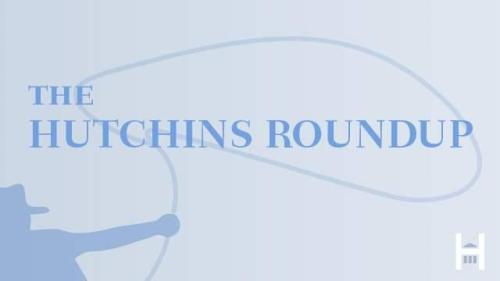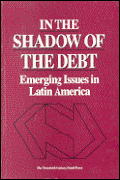Studies in this week’s Hutchins Roundup find that helping workers directly would be the most effective form of fiscal stimulus, the Federal Reserve’s information channel, and more.
Want to receive the Hutchins Roundup as an email? Sign up here to get it in your inbox every Thursday.
Best fiscal stimulus to combat a pandemic: Boost unemployment insurance
Since the outbreak of the COVID-19, governments have scrambled to design stimulus packages to help affected workers and businesses. Using a standard macroeconomic model, Miguel Faria-e-Castro of the Federal Reserve Bank of St. Louis examines the effects of five types of fiscal stimulus: increasing government spending, cutting income taxes, boosting unemployment insurance, providing transfers to consumers, and providing transfers to firms. He finds that boosting unemployment insurance is the most effective way to help vulnerable households—those that rely on employment income—because it stabilizes income and consumption; wealthy households, in contrast, prefer direct transfers. The author argues that the halt to economic activity is intentional, and necessary to suppress the pandemic, so the dollar impact of fiscal spending on stabilizing the income of households who are most affected outweighs stabilizing GDP. The author also finds that helping firms is more effective than increasing government purchases, but neither is as effective as directly helping workers.
Monetary policy’s information channel has become less relevant in the last decade
Federal Reserve announcements can affect markets both by conveying information about monetary policy and by conveying information about the state of the economy that others don’t have. Lukas Hoesch and Barbara Rossi from the University of Pompeu Fabra, and Tatevik Sekhposyan from the Federal Reserve Bank of San Francisco find that this latter effect—the “information channel”— has become less relevant since 2005. Comparing the 1990s and early 2000s to the period since 2005, they show that this decline in relevance coincided with a decrease in the gap between information about economic fundamentals available to the central bank relative to that available to the private sector. They note, for example, that, private sector forecasts have become much closer in accuracy to those of the central bank over time. They reason that the information channel effect has disappeared over time because the Federal Reserve’s communication strategy and transparency has narrowed its informational advantage relative to market participants.
Downward wage rigidity has not changed since the Great Recession
Using establishment-level data from a nationally representative compensation survey, Bruce C. Fallick from the Federal Reserve of Cleveland, Michael Lettau from the Bureau of Labor Statistics, and William L. Wascher from the Federal Reserve Board show that the wage-setting process in the U.S. labor market is characterized by a significant amount of downward nominal wage rigidity – wages don’t fall much even in an economic downturn. For instance, they note that the degree of downward nominal wage rigidity was no different in the Great Recession—a period with a large negative demand shock and low inflation—than in 2001—a period with a mild negative demand shock and higher inflation. Many researchers find that downward wage rigidity has limited effects on the real economy, the authors note. They conclude that this is likely because firms think about labor costs across multiple years when implementing their compensation practices.
Chart of the week: Unemployment insurance claims spike During the coronavirus crisis

Quote of the week:
“The challenge we face is how to act with sufficient strength and speed to prevent the recession from morphing into a prolonged depression, made deeper by a plethora of defaults leaving irreversible damage. It is already clear that the answer must involve a significant increase in public debt. The loss of income incurred by the private sector — and any debt raised to fill the gap—must eventually be absorbed, wholly or in part, on to government balance sheets. Much higher public debt levels will become a permanent feature of our economies and will be accompanied by private debt cancellation,” says Mario Draghi, former president of the European Central Bank.
“It is the proper role of the state to deploy its balance sheet to protect citizens and the economy against shocks that the private sector is not responsible for and cannot absorb. States have always done so in the face of national emergencies. Wars — the most relevant precedent—were financed by increases in public debt. During the first world war, in Italy and Germany between 6 and 15 percent of war spending in real terms was financed from taxes. In Austria-Hungary, Russia, and France, none of the continuing costs of the war were paid out of taxes. Everywhere, the tax base was eroded by war damage and conscription. Today, it is by the pandemic’s human distress and the shutdown.
The key question is not whether but how the state should put its balance sheet to good use. The priority must not only be providing basic income for those who lose their jobs. We must protect people from losing their jobs in the first place. If we do not, we will emerge from this crisis with permanently lower employment and capacity, as families and companies struggle to repair their balance sheets and rebuild net assets.”











Commentary
Hutchins Roundup: Unemployment insurance, information channels, and more.
March 26, 2020